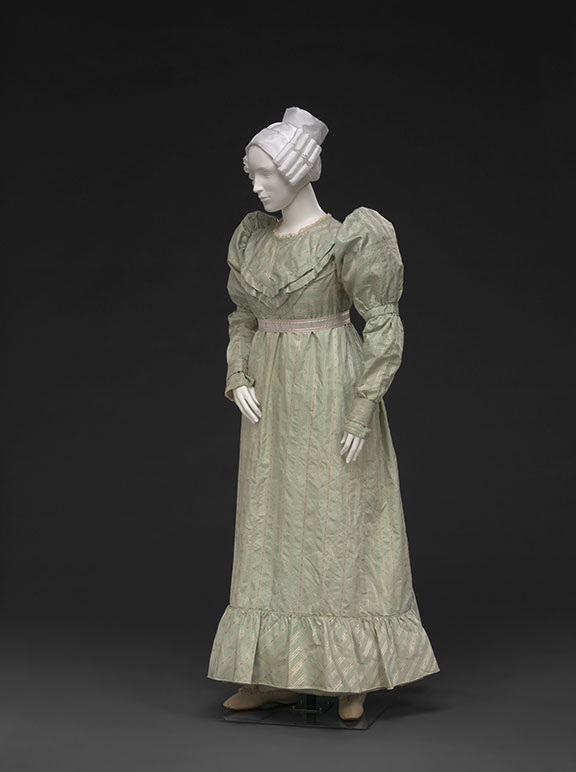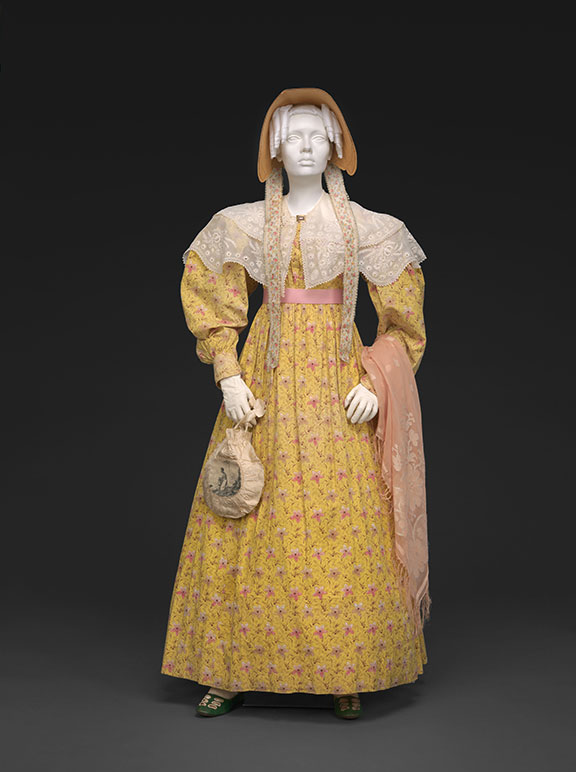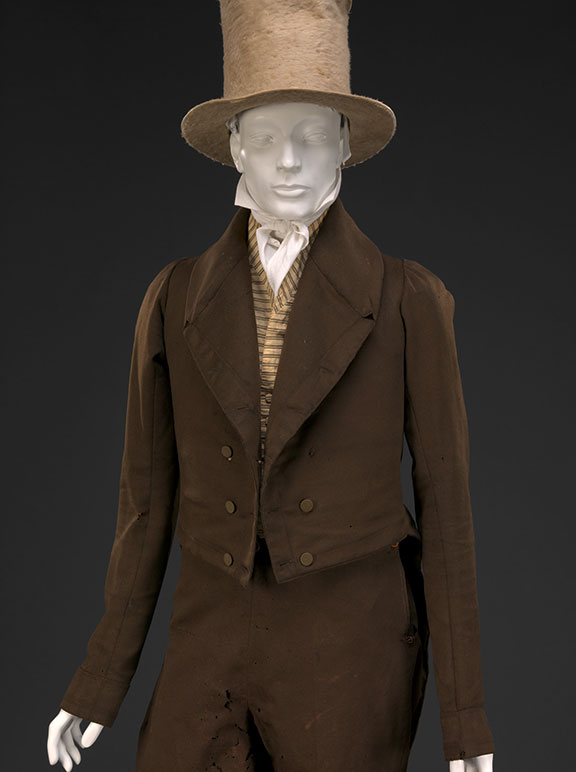“Let the principles of good taste keep you from the extremes of fashion… so as to combine utility and beauty, whilst the known rules of harmony in colors saves you from shocking the eye of the artist by incongruous mixtures.”
– The Young Lady’s Friend, 1838
By the 1820s, only the oldest citizens could remember the Revolution. The debates about whether we should follow European fashion were long over: styles were set in London and Paris and Americans followed them to the extent afforded by their taste and budget. American textile production continued to grow, with many factories beginning to spin, weave, and process fabrics. As a result, our dependence on imports waned over the following decades, although fine European fabrics still held cachet.
Americans continued to grapple with modifying the styles set in the fashion capitals. Conformity with the norm was important; no one should ignore fashion, as all etiquette and behavior manuals agreed. But the lingering distrust of that “agreeable Tyrant,” fashion, is reflected in such typical statements as The Young Lady’s Friend’s counsel that “we ought to mistrust all extravagant French models, and, by modifying our copies of them, escape being made ridiculous, at the will and pleasure of a Parisian dress-maker.”
Styles of the 1820s
Styles were trending far from the neoclassical look of the turn of the century. Gothic and other historical and exotic-seeming countries’ traditions influenced design, often in combination. A single outfit might have medieval sleeves, military trim, and a Turkish turban. Sleeves and skirts widened through the twenties and early thirties; sleeves collapsed in 1826, while skirts continued their expansion through the mid-1860s. Large bonnets and elaborate hairstyles, somewhat absurd to modern eyes, balanced the exaggerated lines of the dresses. Men’s coats, as ever, echoed women’s styles in moderate form; skirted “frock coats” were a new form of daywear.






